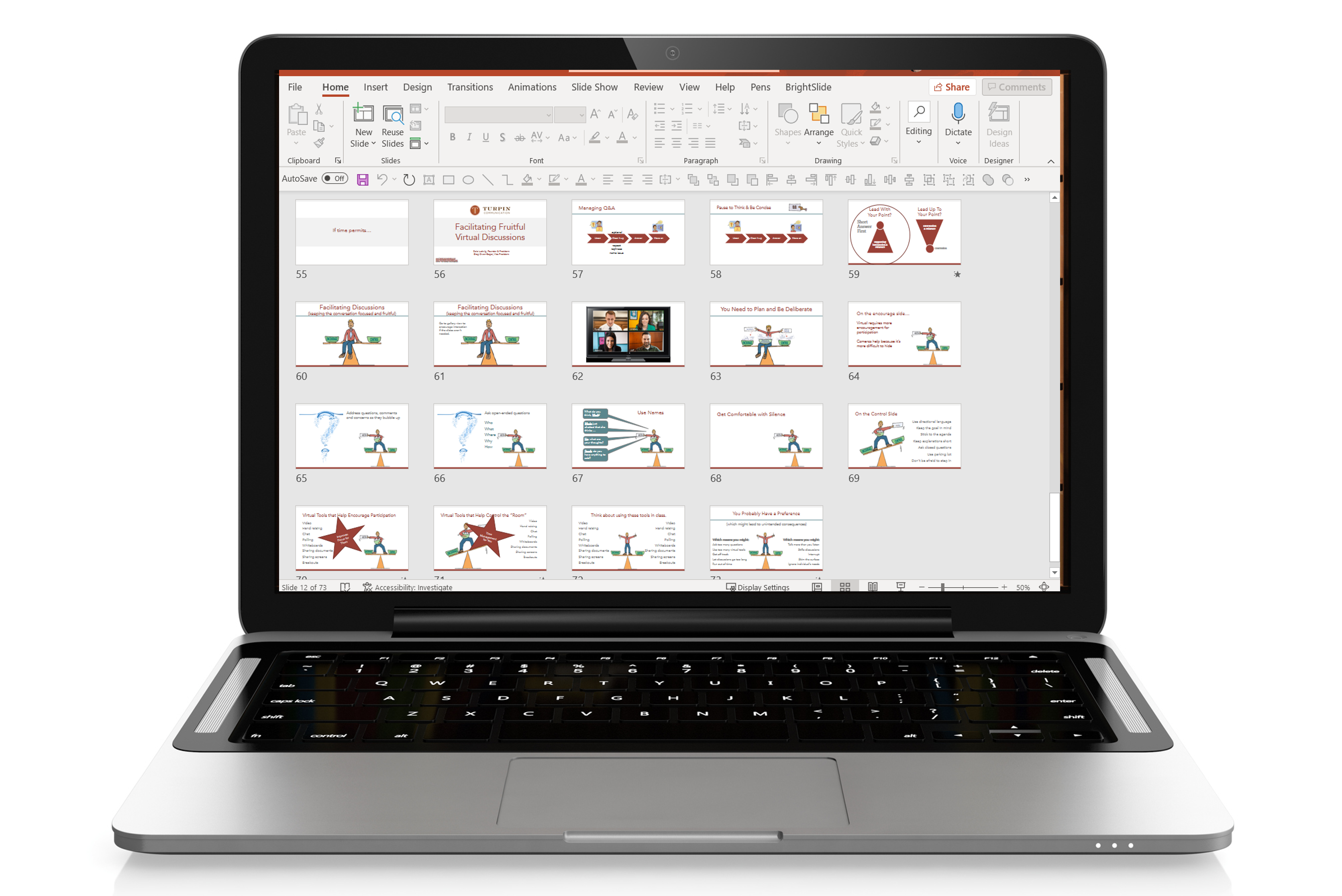
- Dale Ludwig Myths Debunked, Presentations, The Orderly Conversation
This is the second in a series of four articles about the need to take a fresh look at the visuals you use in your presentations. Here’s the question I posed at the end of the last article.
As you know, we define presentations as Orderly Conversations. We need to ask how the slides you use contribute to the process. Do they bring order to, or are they the subject of the conversation?
The visuals you use serve two basic functions. Some of them bring order to the conversation. Let’s call them framing slides. Other visuals are the subject of the conversation. Let’s call them content slides.
Framing Slides
These slides appear in the introduction, conclusion, and as transition slides in the body of the presentation. Slide titles are also used to reinforce the frame. The role of these slides is to make listening easier for your audience. Think of them as a road map. They tell the audience what you want to achieve, how the presentation is organized, and why it’s happening. They provide context and a sense of order.
Too often, presenters underuse these slides because they don’t contain much content. Agenda slides are flashed on the screen with a quick, “And here’s our agenda,” and then they’re gone. Similar things happen with transition slides, slide titles, and conclusion slides. While you may struggle to know what to say when these slides are on the screen, just remember their function. They are there to bring order to the conversation and build the audience’s confidence in you as a presenter.
Content Slides
The slides you deliver in the body of the presentation are the subject of the conversation taking place. As such, they receive more attention than framing slides. Sometimes, when you’re delivering a lot of detail and data, the audience focuses on the visual for an extended period of time.
When this happens, the slide is much more than what we think of as “visual aids,” the simple, subordinate type of visual traditionally used by speechmakers. When content slides are delivered, you and the audience need to give them the attention they deserve. That might be a lot or a little, depending on how the content fits into the presentation as a whole.
What you say about content slides will also be influenced by your audience, of course. You may need to say more than you intended or less. Just remember that your goal is to keep whatever you say within the context of the presentation’s frame.
In the next article, I’ll write about visuals that have a life outside of the presentation in which they’re being used.

